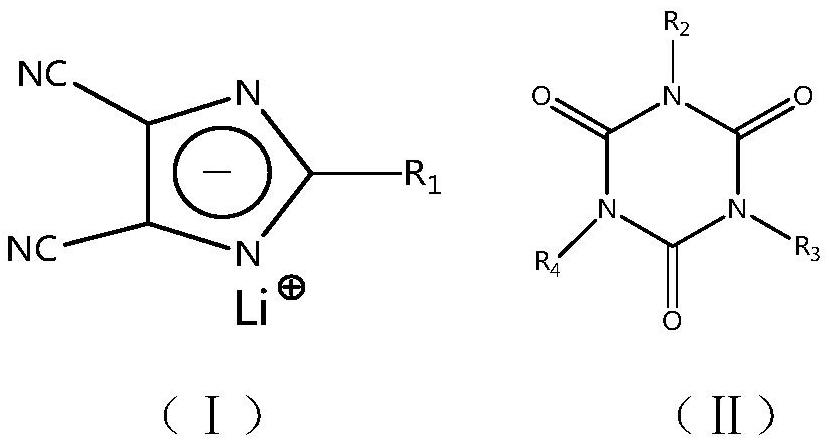High-voltage lithium cobalt oxide lithium ion battery non-aqueous electrolyte and lithium ion battery
A lithium-ion battery, non-aqueous electrolyte technology, applied in secondary batteries, secondary battery repair/maintenance, circuits, etc., can solve the problems of transition metal ion dissolution, side reactions, large quantities, etc.
- Summary
- Abstract
- Description
- Claims
- Application Information
AI Technical Summary
Problems solved by technology
Method used
Image
Examples
Embodiment 1
[0054] Electrolyte preparation: In an argon-filled glove box, ethylene carbonate (EC), propylene carbonate (PC), ethyl propionate (EP), propyl propionate (PP), and compound (7) were mixed by pressing The mass ratio is EC:PC:EP:PP:Compound (7)=15:10:40:25:10, and mix to obtain a mixed solution, and then slowly add lithium hexafluorophosphate (LiPF 13.5% of the total mass of the electrolyte to the mixed solution) 6 ), lithium difluorophosphate (LiPO) accounting for 1.0% of the total electrolyte mass 2 F 2 ), lithium bisfluorosulfonimide (LiFSI) accounting for 1.5% of the total mass of the electrolyte, then adding compound (1) accounting for 5.0% of the total mass of the electrolyte, and stirring to obtain the lithium ion battery electrolyte of Example 1.
Embodiment 2-9
[0056]Examples 2-9 are also specific examples of electrolyte preparation, except that the composition ratio of the components of the electrolyte is added as shown in Table 1, and the others are the same as in Example 1.
PUM
 Login to View More
Login to View More Abstract
Description
Claims
Application Information
 Login to View More
Login to View More - R&D
- Intellectual Property
- Life Sciences
- Materials
- Tech Scout
- Unparalleled Data Quality
- Higher Quality Content
- 60% Fewer Hallucinations
Browse by: Latest US Patents, China's latest patents, Technical Efficacy Thesaurus, Application Domain, Technology Topic, Popular Technical Reports.
© 2025 PatSnap. All rights reserved.Legal|Privacy policy|Modern Slavery Act Transparency Statement|Sitemap|About US| Contact US: help@patsnap.com



